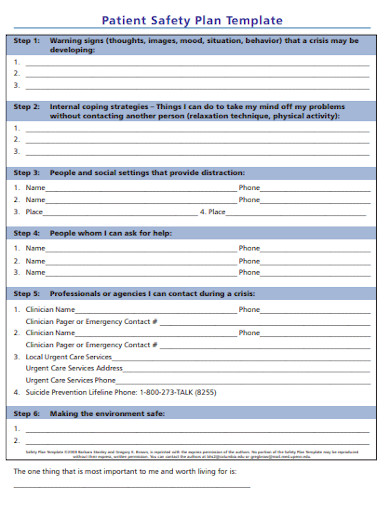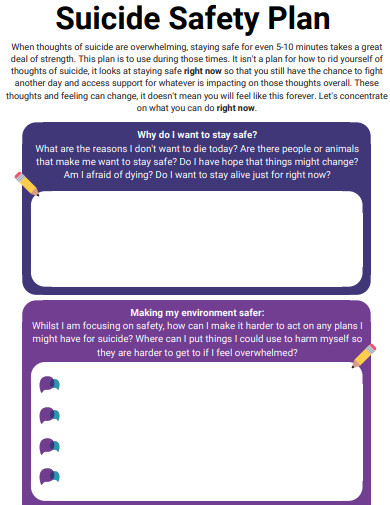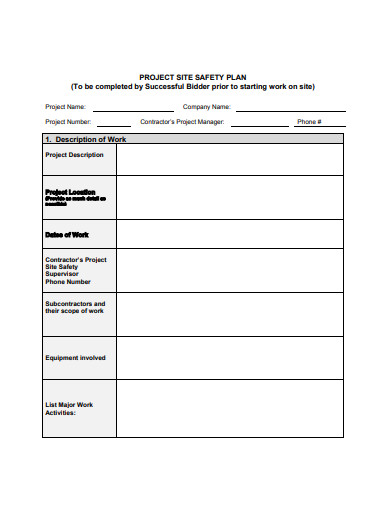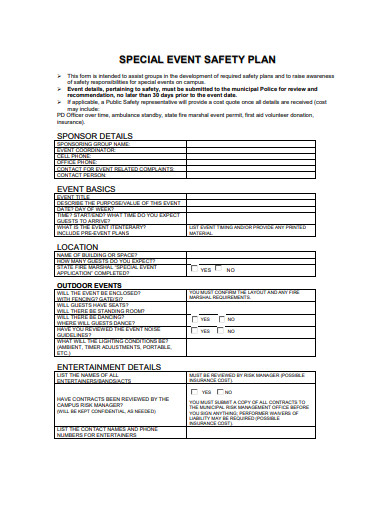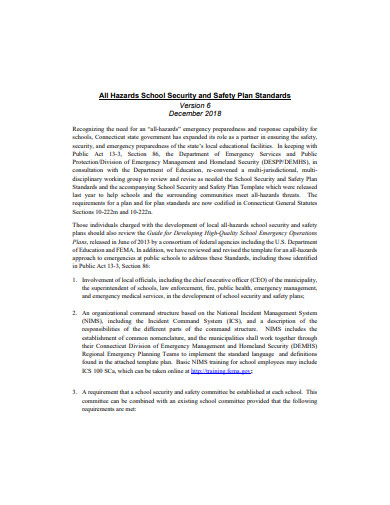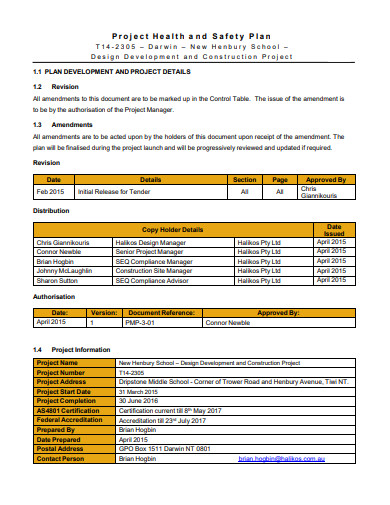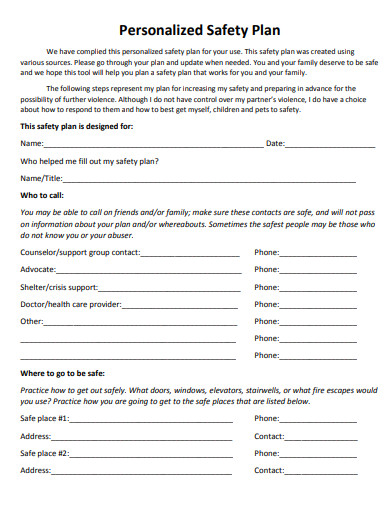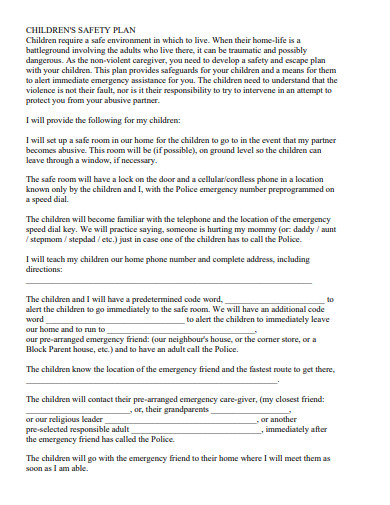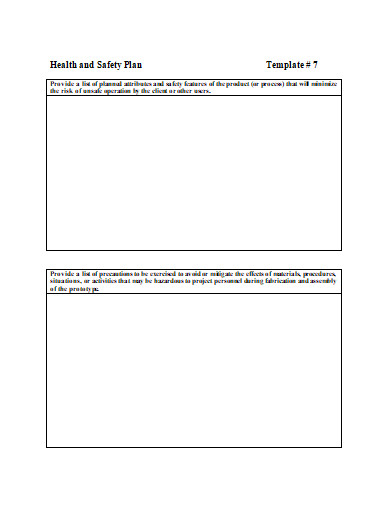10+ Written Safety Plan Examples to Download
Is your job involved in managing the safety and security of a particular group or establishment? If it is, then this is the right place for you. Most likely, you have been creating and developing safety plans in a modern way, given that technology has made life easier for us. But, did you ever consider doing a written safety plan? You might be thinking that a written safety plan would be too time-consuming, but it has its advantages also.
10+ Written Safety Plan Examples in PDF | MS Word
1. Patient Written Safety Plan
2. Suicide Written Safety Plan
3. Project Site Safety Plan Template
4. Special Event Written Safety Plan
5. School Security and Safety Plan
6. Project Health and Safety Plan
7. Work and Safety Plan Template
8. Sample Personalized Written Safety Plan
9. Food Written Safety Plan Template
10. Children Safety Plan Example
11. Basic Health and Safety Plan Template
What Is a Written Safety Plan?
Today, safety plans are essential because of the unpredictability of events. We will never know what’s going to happen even if we are just doing the simplest things. It covers different types of safety, such as job site safety, personal safety, employee safety, and health safety. It ensures that people will be safe and secure wherever they go and whatever they do. As a professional in safety assessment, you have the skills and knowledge in making a safety plan document and its contents with the use of technology, but did you ever consider doing it in the old way?
A written safety plan is a type of safety document that its contents are written using a pen or pencil. It has been very scarce these days because almost everything is computerized, from letters to process documents. It is not questionable, given that many technological breakthroughs make everything we do faster and easier. Of course, as an individual that prefers doing it the easy way, we would always choose computers over pen and paper. We might think that writing a safety plan in the old way can take up too much of our time, but it is an advantage since we can ensure that we can write every bit of information that a safety plan needs wherever we go. Written safety plans are the first forms of a safety plan document, and it is old but gold.
How To Create a Written Safety Plan
A survey from PR Newswire revealed that 75% of people in the business industry prefer using pen and paper in taking notes. It is a traditional way of writing since it’s easier to remember certain information when you write it down. The same goes for a safety plan; writing it using pen and paper can help in remembering things much easier. This section contains the steps and guidelines that will help you craft a well-written safety plan.
1. Pen Quality Is Essential
Before you write your safety plan, make sure that your pen has excellent quality and is in good condition. It is going to help you write clearly and fluently so that the audience can immediately read what you write. Pens with blotchy ink can make the safety plan document look dirty and unprofessional. Also, make sure to bring an extra pen in case the one you’re using malfunctions.
2. Always Bring an Eraser or Correction Ink
Erasers and correction inks are essential as you write your safety plan. Mistakes often happen in writing, so it is necessary to bring erasers or correction inks with you. It is useful in erasing written errors so that your safety plan is void of any mistakes. But, always remember, even though you have the tools in correcting your mistakes, it does not mean that it is okay to have mistakes in your safety plan.
3. Keep a Good Penmanship
In writing your safety plan, make sure that you keep neat penmanship. It is essential so that the reader can easily read and understand the contents of your safety plan. Always keep in mind, a safety plan is a document that assesses the safety and security of a person or an establishment. So, as you write, your penmanship should be clean and readable so that specific actions would be immediately made if there are any concerns that might endanger the safety of a person.
4. Be Descriptive of Your Safety Plan
As you write your safety plan, you should be descriptive in writing its information. Descriptive writing provides the reader with a better picture of what you’re trying to say in your safety plan. It helps the reader quickly understand and comprehend the information you have written in your safety plan. Because of it, solutions will be immediately given to take care of the risk factors that endanger the safety of an individual. For example, if you are writing a safety plan in the construction site of a warehouse, you can write something like: “There should be safety signs placed around the area so that workers and passers-by will be aware of the hazards that might cause accidents.”
FAQs
What methods should I include in a company safety plan?
The methods you can include in a company safety plan can be hazard identification, employee training assessments, safety practices, etc. It can also depend if your company plan is site-specific such as production areas, parking lots, or electricity rooms.
How can I report my written safety plan?
You can report your safety plan by summarizing its contents into a safety report. You can also report it through presentations so that each concern in your safety plan can be thoroughly discussed.
Should I also include the persons responsible for assessing each method in my safety plan?
Yes, you must point out who is responsible for each method in your safety plan. In that way, employees will know who they will approach once a particular situation rises.
When you write a safety plan, think of it as written communication between you and the hazardous objects or risky practices that will put the safety and security of an individual at risk. If it is up to your liking, you can make use of the sample documents in this article as you write your safety plan. You must make sure that your written safety plan covers all the methods that will keep a person safe. Technology may have made the process of creating safety plans much more comfortable, but nothing beats the art of writing it using pen and paper.



